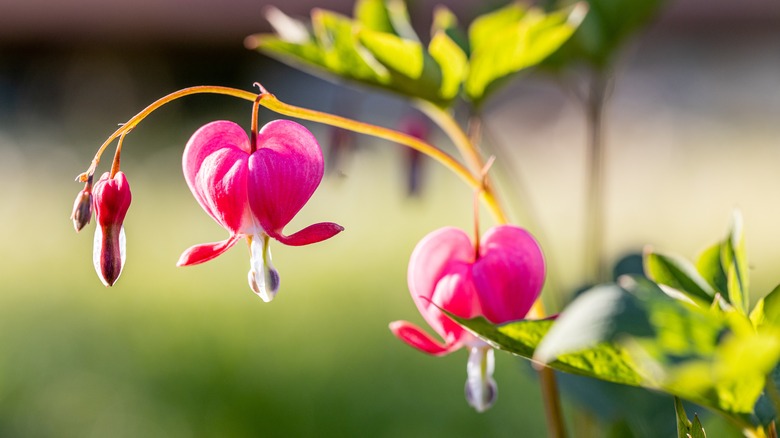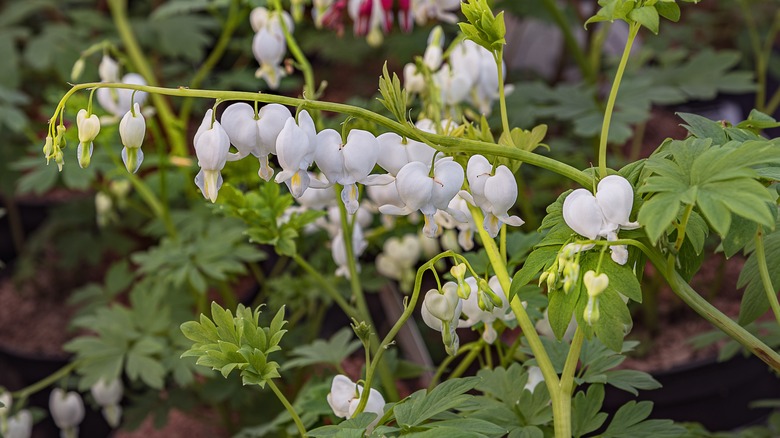Bleeding Hearts: The Dramatic & Colorful Plant You Can Grow Indoors
While you may primarily associate bleeding hearts (Dicentra spectabilis) with outdoor shade gardens, that's not the only place these stunning flowering plants can grow. If you have the space for them, they can also make excellent and easy-to-grow houseplants that even the worst indoor gardeners can handle thanks to their relatively low light requirements. As long as you provide your bleeding heart with an appropriate growing medium, water, and fertilizer, a bleeding heart should make a distinctive and long-lasting addition to your houseplant collection.
When grown outdoors, bleeding hearts are hardy in zones 3 through 9, but of course they can thrive in any zone when grown as houseplants, as long as your home temperatures are relatively cool. Bleeding hearts tend to grow and flower best with temperatures around 50 to 60 degrees Fahrenheit. They can have blossoms that are either pink or white and, of course, shaped like a heart — hence its name. Bleeding hearts are known to cause skin irritation, so be sure to wear gloves and long sleeves when working with the plants. Additionally, they are poisonous if ingested, so think twice before growing them as houseplants if you share your home with young children or curious pets.
Caring for bleeding heart houseplants
As long as you can safely grow indoor bleeding hearts and you have room for a houseplant that can reach 3 feet in height and width, it's just a matter of purchasing a bleeding heart and potting it. While you can purchase bleeding hearts as live plants, they are also often sold as bare roots. You may even be able to divide the bleeding hearts in your garden to give yourself an extra plant to grow indoors.
Be sure to pick a potting mix that drains well when potting your bleeding heart, as the plant can be prone to root rot otherwise. Care for your bleeding heart much the same way you would outdoors, keeping the soil moist without letting it get soggy. Fertilize with organic compost or soil amendments when new growth appears, or use a slow-release fertilizer as needed. Keep in mind though that plants grown in containers often need more water and fertilizer than those grown in the ground, and the same will likely be true for your bleeding heart houseplant.

